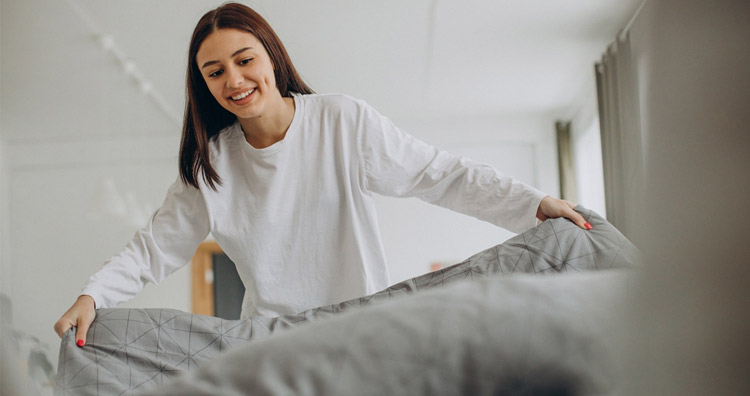Why Shouldn’t You Make Your Bed the First Thing in the Morning?

As we have all been taught, making your bed every morning is like having a clean soul and a step towards a sorted life. Out of all our daily habits, the tradition of making our beds in the morning is always high on the habit pyramid. But it turns out that contrary to what we know, it might be doing more harm than good.
Surprised? Shocking as it might sound, making your bed first thing in the morning can affect your health. This is because of the millions of dust mites with whom you might be sharing your bed. They love nothing more than warm, damp bedrooms, and in the morning, your bed is a perfect breeding ground for them.
So, if you are reading this in the morning, keep that bed unkept for a while. There are scientific reasons why you might not want dust mites as your roommates every day, feeding off your skin.
Table of Contents
Why should you wait to make your bed in the morning?
New research and studies show compelling motives why you should not tidy your bed first thing in the morning. When you make your bed as soon as you wake up, you end up trapping all the dust mites that have gathered throughout the night. Trapping them as soon as you make your bed offers them a perfect breeding ground, allowing them to grow, triggering our allergies and asthma.
But, if you wait at least half an hour, you can give your bed a chance to breathe, and the light and air kill off the dust mites. As per a study by Dr. Stephen Pretlove from Kingston University, who researched this topic, doing something as simple as keeping a bed unmade for at least half an hour in the morning will remove the moisture from sheets and mattresses. Since dust mites mainly feed on moisture, they will eventually dehydrate and die.
So, the word of advice is to wait a while before making your bed. Go have your coffee first. Your bed can fight the dust beasts while you enjoy your morning cup.
What happens when we sleep?
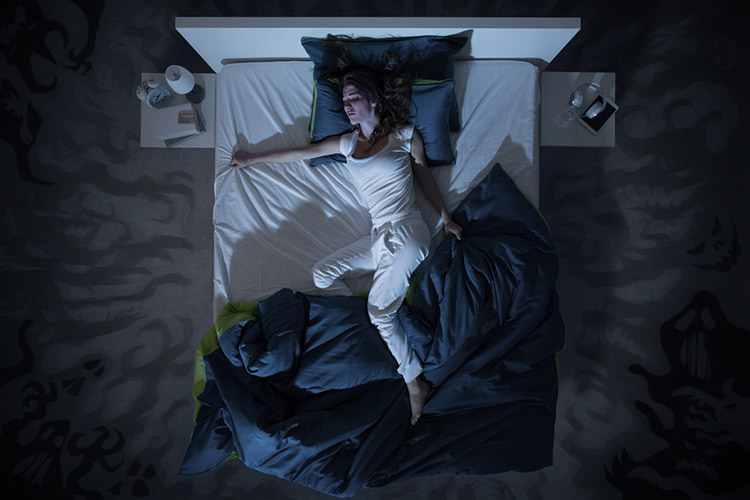
We may be blissfully sleeping, snuggled under the covers at night, but a lot goes on around us while we sleep. We lose a lot of moisture through sweat, oil secretion, and skin cells. As per the Sleep Council in the U.K, an average adult loses almost 10 oz of fluid every night through perspiration as well as respiration. So, we may not know it, but a lot of moisture and flocks of microorganisms get released in the room at night when we sleep. Most of them are on your pillows, covers, and mattresses. Moreover, if the windows are closed and there are two or more people in the room, the dampness gets multiplied.
What are dust mites?
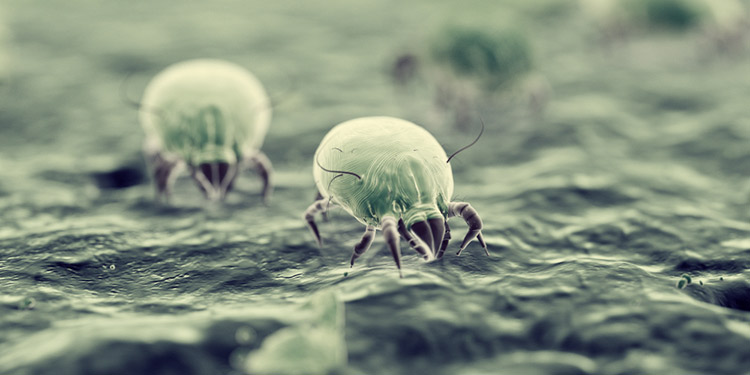
Dermatophagoides pteronyssinus, aka “dust mites,” are tiny, microscopic, insect-like bugs that feed on the scales of dead human skin. They flourish and thrive in humid, warm room settings, which are undoubtedly, and most commonly, the bedrooms in our houses. They feed on all the dead skin that we shed every night. Sounds gross? Thank your lucky stars that they are invisible to us, being too tiny to see. Though they do not bite, sting, or make our bodies their lair, they are quite lethal to our daily health. They give us dust allergies and can be responsible for mild to severe asthma.
Dust mites live mostly in bedding, mattresses, carpets, curtains, and any upholstered furniture in our homes and offices. They are omnipresent and everywhere. As per statistics by American Lung Association, four out of five homes in the United States have dust mites in at least one bed in their house. Interestingly, there is no escaping dust mites as they occur naturally, absorbing moisture from the air. Because humidity is the main catalyst for their existence, dust mites cannot survive in dry and desert areas.
Dust allergies are a reaction to feces and urine of dust mites in your bed. Yew!
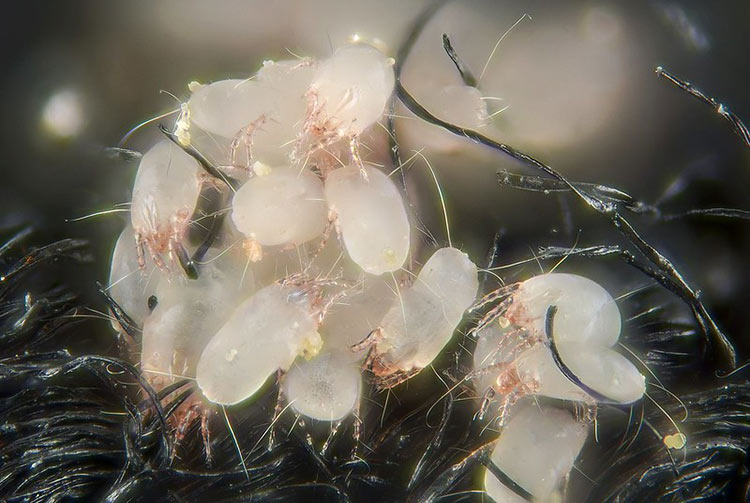
This revelation is not a pleasant one, but it needs to be told. Dust mites trigger dust allergies in people who are sensitive to dust. But what are we inhaling? Mostly, people prone to allergies inhale the proteins in the dust that mainly come from the feces, urine, and decaying bodies of the dust mites. It is revolting but true! Don’t kill the messenger.
When we have a runny nose and sneezing from allergies, it is because our nasal passages swell up, causing inflammation due to dust mites. Prolonged exposure to these tiny beasts can have a lifelong impact on health, especially for people with asthma and people with dust sensitivity. Dust allergies trigger allergic symptoms ranging from mild to severe sneezing, cough, and congestion. In extreme cases, it can trigger a severe asthma attack as it directly affects the lungs.
What is the correct and best way to make your bed?
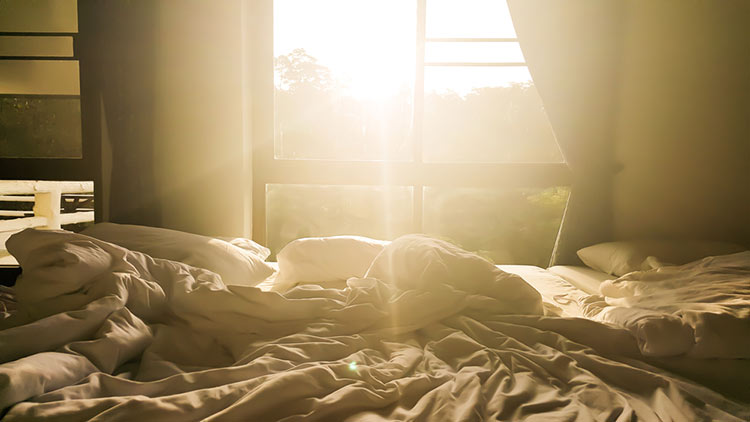
We all know light kills darkness. And the solution to all your dust mite problems is good old sunlight and air. As soon as you leave your bed, keep your mattresses and pillows exposed to light and air, at least for half an hour, so that dust mites can no longer survive.
Since we can’t wash our bed sheets every day, the next best thing to do is to air your sheets every morning. When morning comes, fold back your sheets, or pull down the covers, switch on the ceiling fan if you can, and keep the windows open. Keep this “war mode” on for an hour, and the enemies will be dead before you know it.
However therapeutic and stress-relieving making your bed might be, the trick is to resist the temptation of doing it as soon as you wake up. The rest of the day will then be smooth sailing, without the unnecessary distraction of sneezes and coughs interrupting your significant moments.
Here are a few tips to make your bed clean and bacteria-free.
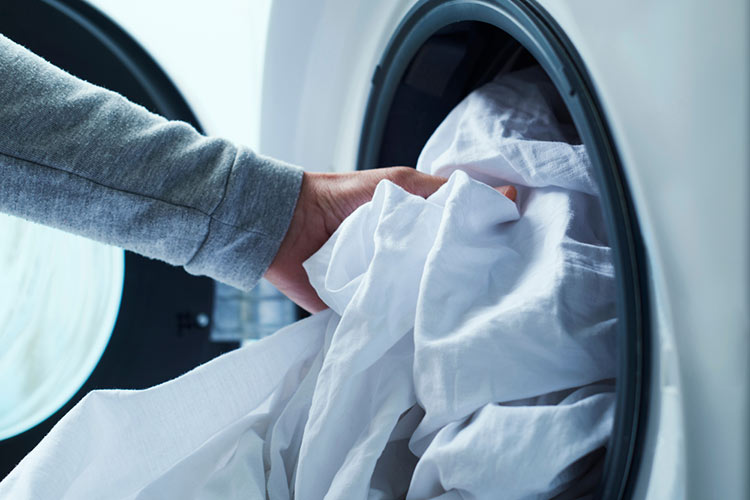
Washing your bed linen is not possible every day, though doing so would help a lot. But a good recommendation is to wash them at least once a week, and pillow covers should be changed every two to three days. When washing your linen, wash them in warm to high temperatures if you want a killing machine for germs. Other good practices that help keep beds clean and discourage dust mites are showering before bed, not getting into bed when you are sweaty, and avoiding going to sleep when wearing make-up, lotions, oils, creams, etc.
We would love to know how many of you changed your lifelong habit after reading this!
12 Personal Hygiene Mistakes You Are Probably Making














